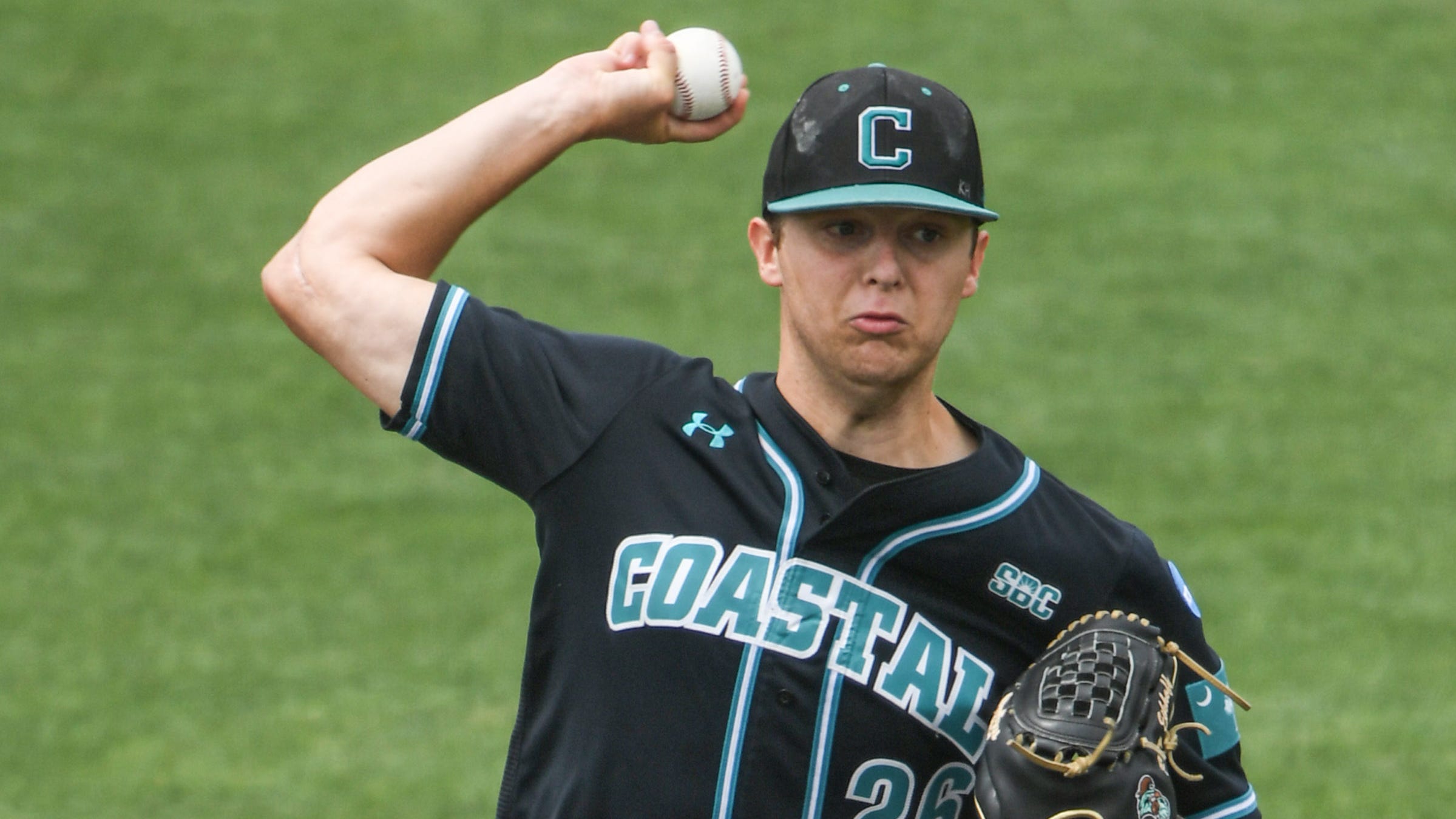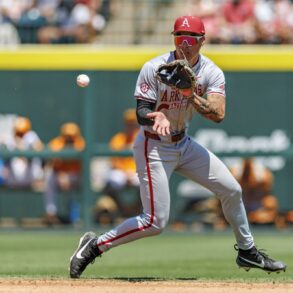
Which NCAA baseball teams could blow up the bracket
The Montgomery Advertiser’s Adam Cole and The Southwest Times Record’s Jackson Fuller break down who could wreck the tournament bracket.
Sometimes the professionals can learn from the amateurs.
That has been the case with the pitch clock in the sport of baseball. While college baseball has had one implemented since 2011, the MLB added a pitch clock ahead of the 2023 season has helped speed up the game.
Just as it was in the 2024 College World Series, pitch clock rules are in place for the 2025 College World Series in Omaha, Nebraska. For the second straight season, Division I games must have at least one “action clock” visible on the field.
Here’s what you need to know about college baseball’s pitch clock ahead of the CWS, including how long it is and the differences from the MLB.
Is there a pitch clock in college baseball?
- Pitch clock: 20 seconds
Yes, college baseball does have a pitch clock. A pitch clock has been in place for all divisions of college baseball since the 2011 season. Pitchers have 20 seconds to deliver a pitch with no runners on base. With runners on base, a pitcher is required to start the motion of pitching or make a pickoff to avoid the clock violation.
Pitchers are allowed one step-off or fake throw to a base per batter to reset the clock. A defensive player or the batter can request a timeout as well, and the clock is reset if it is granted by the umpire. Unlimited step-offs and pick-off attempts are no longer allowed.
If a pitcher violates the pitch clock, a ball is added to the count. Which means if it happens on a 3-ball count, the batter is awarded a walk. On the flipside, if a batter violates the clock ― which includes the batter not being in the batter’s box and informs the pitcher with no fewer than five seconds on the clock ― a strike will be added to the count. Likewise, if it’s a 2-strike count, the batter strikes out.
The NCAA approved requirements for all Division I games to have at least one “action clock” visible on the field by Jan. 1, 2024. The requirement is for a visible clock for Division II and II by Jan. 1, 2025.
Per the NCAA, the timer shall stop under the following circumstances:
- The pitcher begins the windup motion or, from a set position, begins the motion to deliver the pitch.
- The pitcher makes a pickoff attempt (throw) to any base.
- With runners on base, the pitcher steps off the pitcher’s plate to get a new sign or to feint a pickoff attempt. This action counts as a “reset” and is allowed one time per at-bat.
- The catcher leaves the catcher’s box to give defensive signals or to confer with the pitcher from a distance (in which case the timer shall stop, reset, and start again after the catcher returns to the catcher’s box). This action counts as a “reset” and is allowed one time per at-bat.
- The umpire calls “time” for any legitimate reason.
How does the college baseball pitch clock differ from MLB?
The MLB actually followed college baseball’s lead of adding a pitch clock to the sport to speed up the game. However, there are differences between the pitch clock in college and in the pros. In the MLB In there is a 30-second timer in between hitters and pitchers have 15 seconds to deliver a pitch with no runners on and 18 seconds with runners on base (the rule was 20 seconds in 2023).
Other major differences include:
- Batters must be in the box by the eight-second mark in the MLB, or they are charged with an automatic strike.
- Pitchers are limited to two disengagements (pickoff attempts or step-offs) per plate appearance. However, this limit is reset if a runner or runners advance during the plate appearance.
- If a third pickoff attempt is made, the runner automatically advances one base if the pickoff attempt is not successful.
This post was originally published on this site be sure to check out more of their content.







